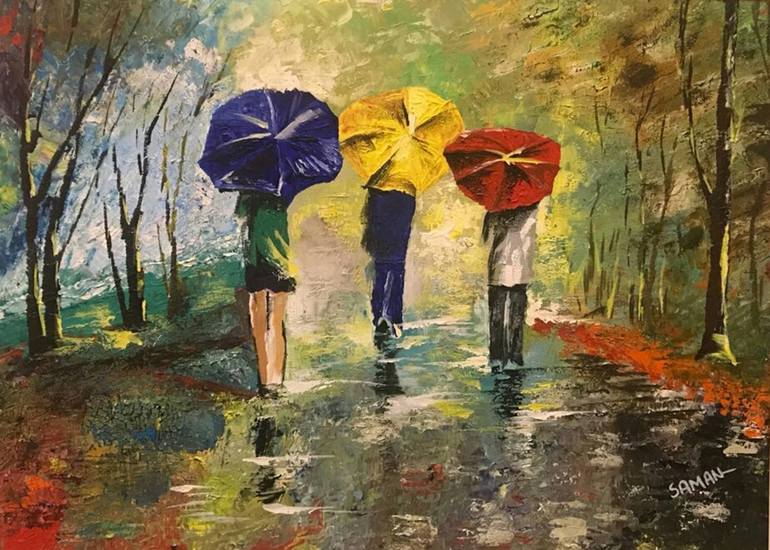Painting Family Memories: Crafting Timeless Treasures
As professional photographers, we have the unique ability to capture moments that are fleeting yet profoundly meaningful. However, there is an art form that transcends even the most exquisite photograph: painting family memories. This practice not only preserves a moment in time but also adds layers of emotion and creativity that a camera lens might not capture. Whether you are a seasoned artist or a photographer looking to expand your artistic repertoire, painting family memories can be a rewarding endeavor.
The concept of painting family memories is not new. Artists have been rendering family scenes for centuries, immortalizing the bonds and stories that shape our lives. For professional photographers, the transition from digital capture to brush and canvas offers a new dimension of storytelling. This article delves into how you can craft these timeless treasures as a photographer, blending your skills in composition and lighting with the tactile beauty of paint.

The Art of Memory: Why Paint?
Painting offers a different perspective on memories. While photography captures an exact moment, painting allows for interpretation, emotion, and depth. A painting can convey the warmth of a family gathering or the serenity of a quiet moment in ways that a photograph might not. It's about capturing the essence rather than the exactness of a scene.
Moreover, paintings have a timeless quality. They become heirlooms, passed down through generations, each brushstroke telling a part of a larger family narrative. This sense of permanence and personal touch makes paintings a cherished form of memory preservation.
Getting Started: From Lens to Canvas
Before you begin painting, consider how your skills as a photographer can enhance your artwork. Composition, lighting, and subject matter are just as important on canvas as they are in a photograph. Start by selecting a family photograph that resonates with you. This will serve as your reference.
Consider the techniques used in memory art to add layers of meaning and emotion to your painting. These techniques can help you decide on color schemes, brushstroke styles, and other artistic elements that will transform your photo into a painting.
Choosing the Right Medium
The medium you choose will affect the outcome of your painting. Oil paints offer rich colors and a long drying time, allowing for blending and adjustments. Acrylics dry faster and are more forgiving for beginners. Watercolors can create delicate, ethereal effects that are perfect for capturing softer memories.
Each medium has its benefits, and the choice often depends on personal preference and the kind of emotion you want to convey. Consider the impact of personal history in art when choosing your medium, as it can influence how your family memories are expressed on canvas.
Techniques to Enhance Your Paintings
As a professional photographer, you already have a keen eye for detail and composition. Translate these skills to painting by focusing on the elements that make a great photograph: lighting, contrast, and perspective.
Use techniques such as layering and glazing to create depth and richness in your paintings. These methods can help you capture the subtleties of light and shadow that are often present in family photographs. Experiment with different brushstrokes to find the style that best conveys the emotion you wish to express.
Incorporating Mixed Media
Consider incorporating mixed media into your paintings for added texture and interest. Elements such as fabric, paper, or even digital prints can be combined with traditional painting techniques to create unique and compelling artworks.
This approach can be particularly effective for memory-based drawing exercises, allowing you to incorporate physical elements that hold personal significance alongside your painted memories.
Storytelling Through Art
Every family has a story, and painting allows you to tell these stories in a deeply personal way. As you paint, consider the narrative you wish to convey. Is it the joy of a family reunion, the quiet strength of a matriarch, or the playful innocence of childhood?
Storytelling through art goes beyond mere representation. It's about capturing the emotions, relationships, and stories that define a family. Use your skills as a photographer to guide you in crafting compositions that speak to these themes.
For more inspiration, you might explore travel-inspired painting ideas that can bring a fresh perspective to your family memories. These ideas can help you incorporate elements from different cultures and experiences into your artwork, adding depth and diversity to your storytelling.
Conclusion: The Timeless Art of Painting Family Memories
Incorporating painting into your repertoire as a professional photographer not only enhances your artistic skills but also enriches the way you capture and preserve family memories. By blending your understanding of photography with the expressive potential of paint, you can create artworks that are not only beautiful but also deeply meaningful.
As you embark on this artistic journey, remember that the process is just as important as the final product. Each brushstroke, color choice, and composition decision is part of the story you are telling. Through painting family memories, you have the power to create timeless treasures that will be cherished for generations.

FAQs
How do I choose the right photograph to paint?
Choose a photograph that resonates emotionally and tells a story. Consider the composition, lighting, and the emotions captured in the image.
What if I'm not an experienced painter?
Start with simple projects and gradually experiment with more complex techniques. There are many resources available, such as online tutorials and workshops, to help you improve your skills.
Can I combine different art styles in my paintings?
Absolutely. Combining different styles and techniques can add unique elements to your paintings, making them more personalized and expressive.

